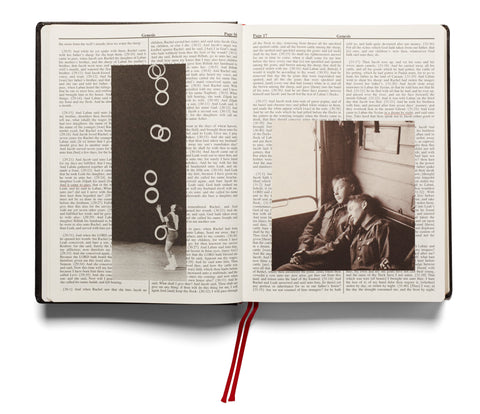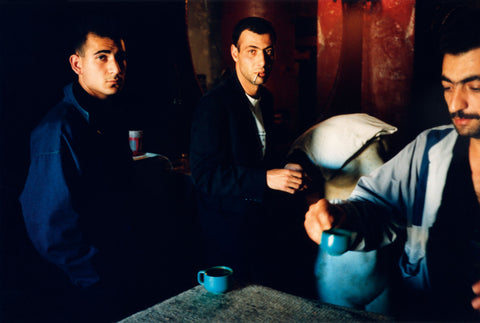
Anna Ostoya: Let’s talk about art.
Chantal Mouffe: You were saying at the beginning of our conversation how you liked that my work gave an impression that one could resist.
AO: That’s right. To me, your theory helps to resist what Chiapello and Boltanski called the “new spirit of capitalism,” the world in which power now operates with invisible networks and manipulation, versus the transparent hierarchies and discipline of Fordism.
CM: I know that the book by Chiapello and Boltanski has been much criticised by some artists, but I think it’s because they understood it wrongly. They understood that the artists were responsible for the development of neoliberalism. It’s not at all that. I think the authors explain a détournement, a term from The Situationist International: a recuperation—an absorption—by capitalist forces of artistic practices and of the counterculture of the ‘60s, the demands for more freedom, flexibility, creativity. A lot of criticism of artistic practice came from the feeling that, “Ah, now it’s too late, we can’t do anything critical because we’re always recuperated. No form of art can be really subversive. Everything is recuperated by the creative industry.” And I was saying no, there’s always a possibility of fighting back. It’s a kind of little guerilla war. They use you, but you’re reacting against it.
AO: You have an example that you have often cited.
CM: The Grand Fury collective in the moment of the AIDS struggle and their détournement of a Benetton advertising campaign, which had been using the multicultural angle to sell Benetton products. In return, Grand Fury used the style of this campaign and made posters with three couples—gay, lesbian, and multicultural—kissing. It said, “Kissing does not kill: Greed and indifference do.” So it was a publicity ploy used for their interests, not Benetton’s. It even mobilized public gatherings. When used, we can also reuse or strike back. And that’s how I see things. There’s always a way.

AO: But wouldn’t you say when you compare this moment with ten, twenty years ago, that the situation seems to be getting worse, we’re on a decline rather than in some nice flux that would go up and down?
CM: Yes, I agree with that. And I realize that the commercialization of the art market is obscene. I understand it must be really difficult for artists who want to have a critical voice. But one must have some kind of a belief. One thing that I mentioned in a piece some time ago, I don’t know if you ever saw it, is that the museums and the artistic institutions can still play a role today. I referred to something that Boris Groys once wrote, that maybe the museums could be the places where one could, let’s say, extract art from the market.
AO: Well, maybe if there are some new curating strategies like mounting an exhibition according to the lowest possible insurance values. Unfortunately, the museum’s role in the market is complicit. The typical museum in the US receives supposedly only about one-fourth of its funding from government grants. The rest comes mostly from private donors. It’s like in the presidential elections: how to stay independent when accepting funding from people with conflicting interests? You believe in art and you want to forget about the market, but here it turns out the museums facilitate speculation. An exhibition in a museum, especially an important museum, legitimizes an artist’s work, thus its sale price rises. Dealers use the museum’s walls to sell art of the artists they represent. They also contribute to the exhibition’s budget so what’s more profitable is shown more. And the donors are often collectors interested in raising the value of the works they own.

CM: That’s the US, but that’s not the case here in Europe. For instance, there’s this platform L’Internationale of the museums in Spain, Slovenia, Holland, Belgium, and Turkey (MACBA, Reina Sofia, Moderna Galerija, MvHKA, SALT, VAM). The idea is to transform these institutions into agonistic spaces. It’s an interesting project, definitively anti-neoliberal. For example, it proposes that a museum looks into the idea of common ownership of collections. They’re going against the current situation. And they’re smaller institutions who think in that direction. And there’s nothing like that in the US?
AO: Not that I’ve heard of, certainly not on that scale. But there are big changes. The private and the public collections are making new acquisitions of works they wouldn’t have earlier considered. The exhibitions have a new vibe of inclusiveness. Finally, it is possible to challenge canons that until recently were unquestionable, to include voices that have been overlooked for a long time. But it’s a messy process and has its problems. The newly upgraded New York MoMA mixes various works of renowned and lesser-known artists, but it has little to say about the history of the struggle of those who had been excluded. There has been controversy, for example, over their adding a painting by Afro-American artist Faith Ringgold in Picasso’s room. They did something similar in Matisse’s room. You could argue these curatorial decisions are attempts at provocation which, instead of challenging the status of the old masters, end up underlining it. But such experiments at least generate some discussion. It’s worse when the incorporation of previously excluded art is, as my art historian friend put it, “a seamless absorption,” as if there had been no fight to make it happen. These exhibitions can be gimmicky and disorienting to the public and insulting to the artists. No divides, no clear articulation of differences, a neoliberal utopia, you might say. Following your ideas, I believe it’s essential for the institutions to present the struggles, voices, and histories. I mean, don’t they deserve that? Don’t museumgoers deserve that?
Excerpt from Anna Ostoya and Chantal Mouffe's conversation in Politics and Passions.

ISBN 978-1-913620-19-6
€17.50 £15 $20





